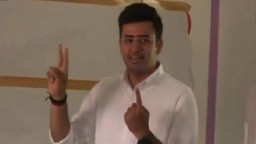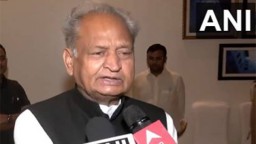Collaborative goal setting & employee engagement
.png)
My association with senior industry leaders and corporate directors over past decade and half has pointedly brought forward one particular aspect of employee engagement. While most companies recognize that employee engagement is good for their business, poor retention and motivation affects their productivity and finally reflects on their profitability. It’s logical that workers who have an emotional connect to their jobs, managers and environment will obviously put in their heart and soul to work and thus be more productive. In fact, there’s plenty of research showing that employee engagement has a direct impact on company’s performance and profitability. But how employee engagement in an organization is defined will dictate the congeniality at work place.
The truth is that the concept of employee engagement is somewhat incomprehensive and carries different meaning to different people. And therefore, many organizations have indistinct and dispassionate goals for employee engagement.
So, what could be the Collaborative Goals when it comes to employee engagement? In my personal opinion, unlike the conventional model where in a manager determines the direction of an employee’s work, collaborative goals are agreed through consultation, analysis, listening, prioritising and assessing targets and objectives together with employees. It’s a translucent process that makes work force believe they’re being listened to and included in the company’s frame work.
In addition to setting clear collaborative goals, I would emphasise that employees work well when they are faced with challenging goals as handling these difficult goals forces them to work untiringly and that helps them develop new skill sets and as a result, receive positive feedback and an overall sense of achievement.
Now the question arises if a strategic suggestion or design be recommended for formation of goals. Yes, as a keen observer and corporate trainer I would suggest a four-prong rational for setting goals. That is a mix of clarity, brevity, commitment and feedback. Goals must be clear and specific for workers to understand the objectives and deadlines. As also, goals should be laid out in simple language for employees to focus upon. And finally, goals should be broken down into smaller goals with timeline for each. Having decided on the collaborative goals, concentrate on essential drivers for employee engagement. While for some the priority may be to improve retention ratio, for others it could be reducing absenteeism and yet some may move on to the final stage of building a high-performance culture and feeling of ownership by employees. However, understand that managers and leaders need to be sensitive to employee engagement vision.
So, may we say there needs to be a process that companies ought to follow to achieve this? My answer would in affirmative. Having worked with industries both in services and manufacturing sectors, I opine that senior leaders need to focus on three unavoidable principles which are, firstly, linking personal goals of employees to organizational ambitions to establish accountability. Secondly, Keep the communication channels open. And finally, managers and leaders have to be on guard to identify possible risks that could inhibit one from reaching desired destination? How these bottle necks are managed and negotiated will display the vision of the leaders. Therefore, flexibility and agility hold the key to success and mid-course correction.
To achieve the objective, many business thought leaders, world over, have laid out a number of active and passive techniques for corporates to set and communicate goals. But I believe that the SMART model theory still remains the best and effective way to achieving employee engagement. Actually, SMART is an acronym that stands for Specific, Measurable, Aggressive, Realistic and Time-bound goal setting technique that caters for accountability of each employee, aligning of personal goals with broad company policies and a fool proof system and a process bound by deadlines and targets.
Remember, Goal setting indeed is a complex issue and the errors in embedding them may cause some serious disadvantages to raise ugly heads. Therefore, corporates should guard against four main problems associated with team goals which are lack of leadership, fuzzy focus, stuck in sameness and perfectionism. If teams can’t adapt and innovate, then team members tend to participate in group thinking leading to the same old thought repeatedly. If new ideas aren’t generated, the organization would lose the cutting edge in the market pie. Without a strong leader, the direction of the company will be in an anonymous direction and that in turn will lead to vague goals that will be hard for the employees to follow along.
THE VIEWS EXPRESSED BY THE AUTHOR ARE PERSONAL
COL ANUPAM JAITLY (RETD) The writer is Defence expert, Motivational Speaker & Corporate Trainer




.png)
.png)
.png)
.png)
.png)
.png)











